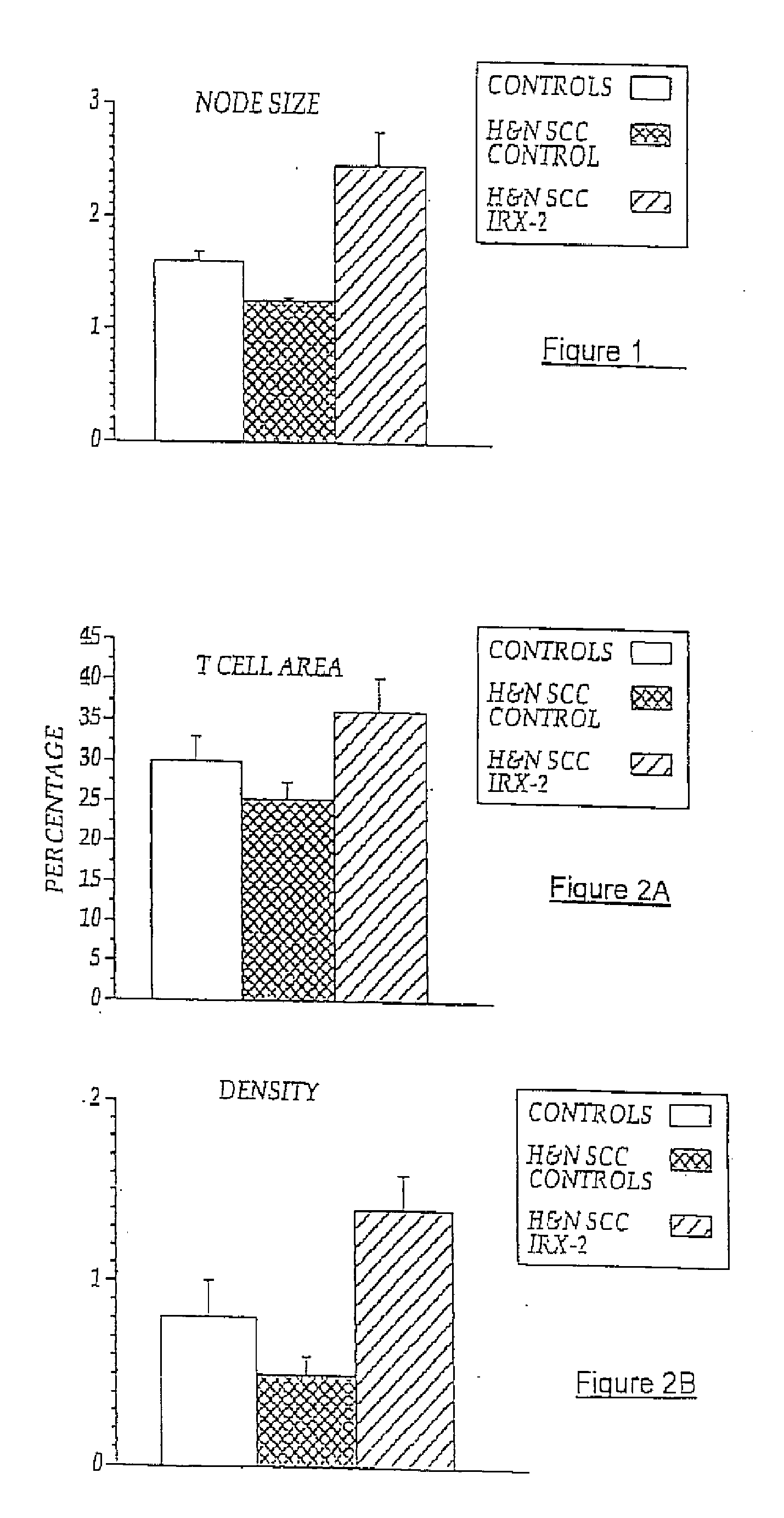Immunotherapy for immune suppressed patients
a technology for immune suppressed patients and immunotherapy, applied in the field of personalization medicine, can solve the problems of cell immunodeficiency, body is not able to effectively protect itself from harmful antigens, and body is not able to d
- Summary
- Abstract
- Description
- Claims
- Application Information
AI Technical Summary
Benefits of technology
Problems solved by technology
Method used
Image
Examples
example 1
[0084]Local perilymphatic injections in the neck with NCM in addition to treatment with low dose CY (at 300 mg / m2), INDO (25 mg orally three times daily), and zinc (65 mg elemental zinc as the sulfate orally once a day) have induced clinical regressions in a high percentage of patients with squamous cell head and neck cancer (H&NSCC) (Hadden, 1994; Meneses, 1998; Barrera, 2000; Hadden, 2003; Menesis, 2003) with evidence of improved, recurrence-free survival. Overall, including minor responses (25%-50%), tumor shrinkage and reduction of tumor in pathological specimens, over 90% responded and the majority had greater than 50% tumor reduction.
[0085]These responses are speculated to be mediated by immune regression since both B and T lymphocytes were observed infiltrating the tumors. The therapy was not associated with significant toxicity. Treatment of lymphocytopenic cancer patients with the combination of NCM has resulted in marked lymphocyte mobilization; where analyzed, these patie...
example 2
Role of the Intradermal Skin Test in Prognosis
[0090]We previously suggested that patients with a negative intradermal skin test to NCM might show poor clinical responses based upon a single patient (Hadden, 1994). We have now accumulated a series of skin test negative patients and find that they show responses similar to those observed upon treatment with the CY & INDO combination (without significant NCM) as shown in U.S. patent application Ser. No. 11 / 374,783. Thus, ten patients had negative skin tests with a NCM of the present invention (i.e., were unresponsive to the NCM) and were subsequently treated with the NCM plus CY and INDO as disclosed in Example I above. While these patients had a poor overall clinical response, they nevertheless showed clear cut clinical effects of the CY+INDO treatment including significant lymphoid infiltration, unexpected tumor reduction and fragmentation, and 20% survival (see Table II below).
[0091]Importantly, these results also confirm that a pos...
example 3
[0094]The NCM skin test not only predicts response to NCM treatment, with or without surgery±radiotherapy, but also predicts overall survival, time to recurrence, and time to death in cancer patients.
[0095]Fifty four patients with H&NSCC were treated with a combination immunotherapy using NCM (IRX-2) in low dose by injection at the base of the skull, preceded by an injection of low dose cyclophosphamide (CY, 300 mg / M2) and accompanied with daily oral indomethacin (25 mg tid) and zinc (as StressTabs®) as described by Hadden, et al., 1994 and 2003. Thirty two on protocol patients with stage II-IV operable H&NSCC were treated with a 21-day treatment prior to surgery and, where indicated, additional radiotherapy was given following surgery. These patients were skin test positive to a 0.1 ml dose of intradermal NCM (IRX-2) (containing 11-20 units of IL-2 equivalence) and, where tested, were also skin test positive to an intradermal 0.1 ml dose of PHA (0.05 μg-0.5 μg). 16 additional patie...
PUM
 Login to View More
Login to View More Abstract
Description
Claims
Application Information
 Login to View More
Login to View More - R&D
- Intellectual Property
- Life Sciences
- Materials
- Tech Scout
- Unparalleled Data Quality
- Higher Quality Content
- 60% Fewer Hallucinations
Browse by: Latest US Patents, China's latest patents, Technical Efficacy Thesaurus, Application Domain, Technology Topic, Popular Technical Reports.
© 2025 PatSnap. All rights reserved.Legal|Privacy policy|Modern Slavery Act Transparency Statement|Sitemap|About US| Contact US: help@patsnap.com



